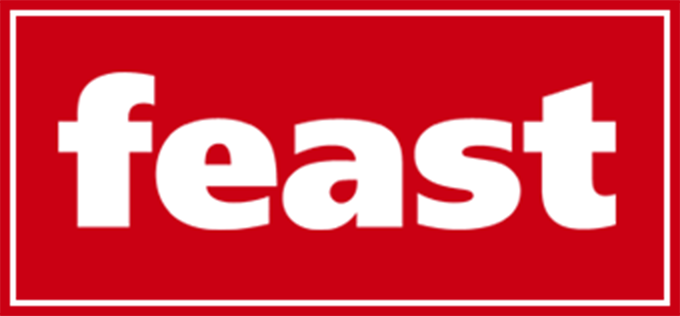It is not uncommon for working individuals and families to experience shortfalls between pay cycles. Unexpected bills, medical emergencies, or even the timing mismatch between outgoing expenses and incoming wages can leave households in a precarious financial position. In response to these gaps, a growing number of people are turning to micro-loans—a category of short-term lending that provides quick access to small loan amounts, typically under $2,000.
While micro-loans are not without controversy, they have, in recent years, become a financial stopgap for many. The appeal lies in their accessibility, immediacy, and ability to resolve urgent shortfalls. However, it is essential to understand their function, limitations, and the broader implications of their rising use.
Understanding the Nature of Micro-Loans
Micro-loans, formally referred to as Small Amount Credit Contracts (SACCs), are loans of up to $2,000 with repayment terms ranging from 16 days to 12 months. These are typically unsecured, meaning borrowers are not required to provide collateral. Lenders such as Wallet Wizard, Cash Converters, and newer digital platforms including Beforepay and MyPayNow have streamlined the application process, often offering same-day approvals and disbursements.
Unlike traditional credit products, micro-loans are often used to cover short-term necessities such as rent, utilities, school costs, and vehicle repairs. They are not structured for long-term financial planning, but rather to manage temporary cash flow interruptions.
A Response to Wage Insecurity and Cost-of-Living Pressure
Many borrowers seeking micro-loans are not irresponsible with money; rather, they are individuals navigating volatile work schedules, rising costs, and insufficient financial buffers. This is especially common among casual and part-time employees, self-employed contractors, and people receiving government income support.
Data from the Consumer Action Law Centre highlights that the majority of borrowers use micro-loans to pay for essential needs. These include electricity bills, rent arrears, medical treatments, and vehicle-related costs. The challenge is not in budgeting as such, but in the unpredictability of expenses in contrast to fixed or delayed incomes.
Moreover, the growing prevalence of services that provide early access to earned wages—often termed pay-on-demand services—illustrates a shift in how people bridge financial gaps without resorting to traditional forms of credit.
The Emergence of Pay-on-Demand Platforms
Pay-on-demand services such as Beforepay, Wagepay, and MyPayNow are reframing micro-lending by allowing users to access a portion of their wages before their official payday. These platforms generally charge a fixed fee (commonly around 5% of the amount advanced) and recover the funds directly from the borrower’s bank account on their payday.
Although marketed as a modern and more affordable alternative to payday loans, the regulatory oversight of these services is still evolving. The Australian Securities and Investments Commission (ASIC) has expressed concern over the lack of consumer protections, particularly because many of these platforms are not bound by the National Consumer Credit Protection Act, which governs responsible lending practices.
In some cases, individuals become dependent on these services, using them repeatedly to cover regular expenses, leading to what financial counsellors describe as a “reliance cycle” that mirrors the issues associated with traditional payday lending.
Comparing Micro-Loans with Other Financial Products
When evaluating the cost-effectiveness of micro-loans, it is important to consider them alongside other available financial options.
For individuals with collateral and more stable income, using a secured loan calculator from providers like KIS Bridging Loans can help compare longer-term borrowing options with clearer repayment forecasts.
The table below outlines the key differences:
| Product | Loan Amount | Typical Cost | Processing Time |
| Micro-loan (e.g. Wallet Wizard) | $300–$2,000 | Up to 20% establishment fee plus 4% monthly fee | Same-day |
| Pay-on-demand (e.g. Beforepay) | Up to $2,000 | 5% flat fee | Same-day |
| Credit card cash advance | Up to an available limit | 20–22% interest + fees | Immediate |
| Overdraft | Varies | 11–15% interest + overdraft fees | Same-day |
| NILS (No Interest Loans) | Up to $2,000 | No interest, no fees | 1–2 weeks |
Micro-loans remain more expensive than mainstream credit products, particularly when used frequently or repaid over extended periods. However, individuals without access to credit cards or overdrafts—often due to low credit scores or irregular income—remain one of the few available options.
Risks and Drawbacks
Despite their utility, micro-loans carry significant financial risks. The most pressing concerns include:
- Accumulated debt from repeat borrowing: Many users take out multiple loans concurrently or reapply before completing repayments.
- High penalties for missed payments: Late fees and dishonour charges can significantly increase the total repayment amount.
- Negative credit reporting: Missed repayments are typically reported to credit bureaus, affecting future access to credit.
- Aggressive debt collection: Some lenders outsource to collection agencies that may employ persistent and sometimes unethical tactics.
According to Financial Counselling Australia, micro-loan users often experience elevated stress levels, strained relationships, and a diminished capacity to manage other financial obligations.
Safer and Regulated Alternatives
Several safer alternatives exist for individuals needing short-term financial support:
- NILS (No Interest Loans Scheme) – Managed by Good Shepherd, NILS offers loans of up to $2,000 with no interest or fees. These loans are available for essential items such as medical expenses, household appliances, or car repairs.
- Centrelink Advance Payment – Eligible recipients of Centrelink payments can access part of their entitlement in advance, which is repayable over several months with no additional cost.
- StepUP Loans—Jointly run by Good Shepherd and NAB, these low-interest loans (from $800 to $3,000) are available to individuals on low incomes and designed for essential and stable needs.
These options are less immediate than commercial micro-loans, but they offer more sustainable terms and protections.
Micro-loans, when used with caution and clear intention, can provide vital support during financially vulnerable periods. They help bridge gaps that formal banking products may not address—particularly for those outside the margins of traditional finance.
However, the speed and ease that make micro-loans attractive can also lead to overuse and financial harm. As these lending products evolve alongside fintech services, regulatory frameworks must keep pace to ensure fair treatment, transparency, and long-term sustainability for users.
In the meantime, financial literacy, proactive budgeting, and awareness of safer alternatives remain the most effective tools for managing short-term financial pressure without incurring long-term debt.



